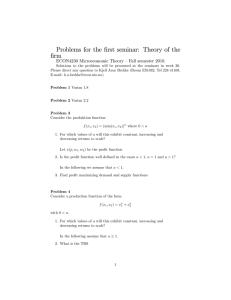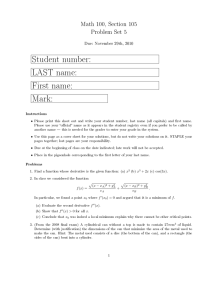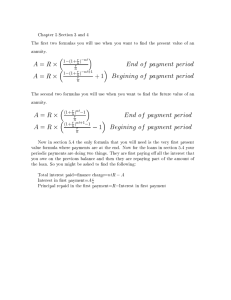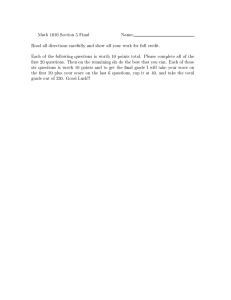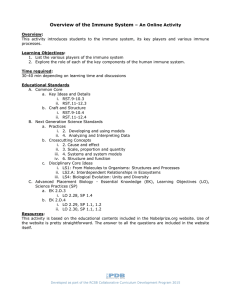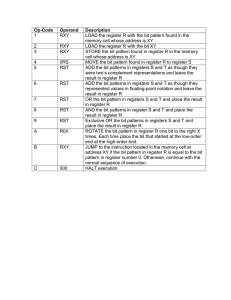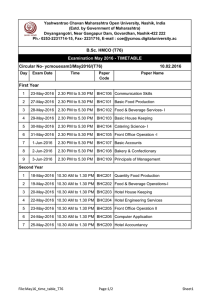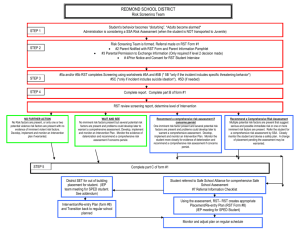Problems for the second seminar: Theory of the …rm
advertisement
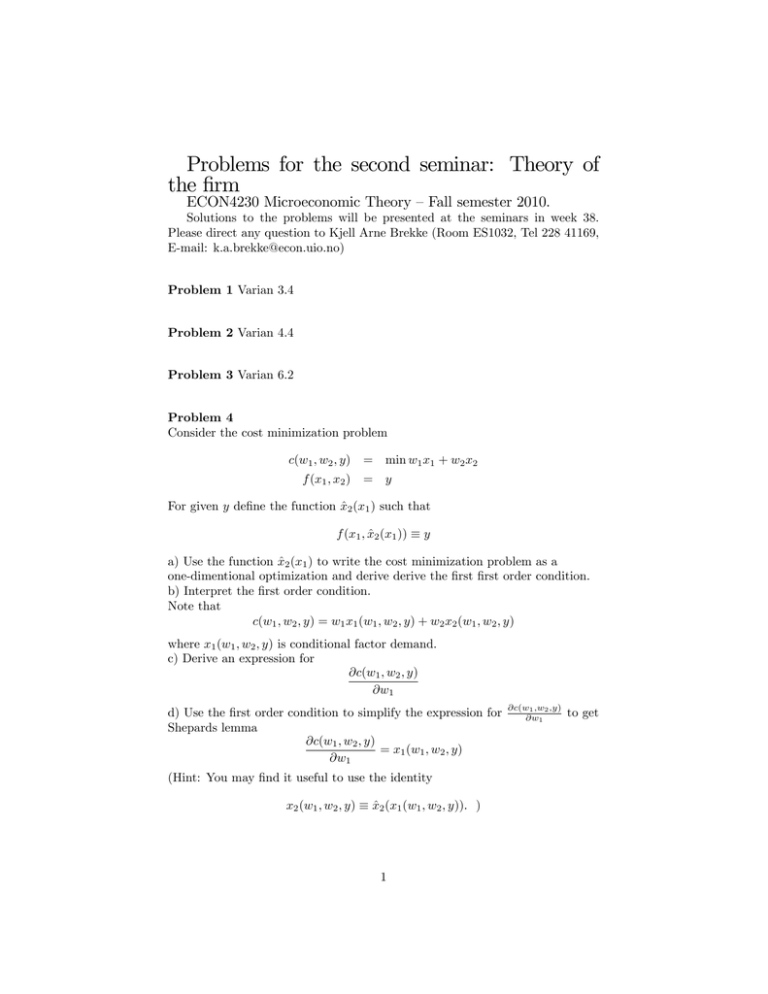
Problems for the second seminar: Theory of the …rm ECON4230 Microeconomic Theory –Fall semester 2010. Solutions to the problems will be presented at the seminars in week 38. Please direct any question to Kjell Arne Brekke (Room ES1032, Tel 228 41169, E-mail: k.a.brekke@econ.uio.no) Problem 1 Varian 3.4 Problem 2 Varian 4.4 Problem 3 Varian 6.2 Problem 4 Consider the cost minimization problem c(w1 ; w2 ; y) = min w1 x1 + w2 x2 f (x1 ; x2 ) = y For given y de…ne the function x ^2 (x1 ) such that f (x1 ; x ^2 (x1 )) y a) Use the function x ^2 (x1 ) to write the cost minimization problem as a one-dimentional optimization and derive derive the …rst …rst order condition. b) Interpret the …rst order condition. Note that c(w1 ; w2 ; y) = w1 x1 (w1 ; w2 ; y) + w2 x2 (w1 ; w2 ; y) where x1 (w1 ; w2 ; y) is conditional factor demand. c) Derive an expression for @c(w1 ; w2 ; y) @w1 d) Use the …rst order condition to simplify the expression for Shepards lemma @c(w1 ; w2 ; y) = x1 (w1 ; w2 ; y) @w1 (Hint: You may …nd it useful to use the identity x2 (w1 ; w2 ; y) x ^2 (x1 (w1 ; w2 ; y)): ) 1 @c(w1 ;w2 ;y) @w1 to get Problem 5 (Natural Monopoly) Consider an industry where all …rms have the same cost function c(w; y). Assume that for some y it is the case that for any y 0 and y 00 such that y 0 + y 00 y then c(w; y 0 + y 00 ) < c(w; y 0 ) + c(w; y 00 ) (1) Show that this implies that for a market size y y a monopolist can produce the amount at lower cost than the total cost of N identical competitors.ie.c(w; y) < N c(w; Ny ) Consider next the case of a Cobb-Douglas technology y = xa1 xb2 for a > 0 and b > 0 For what values of a and b will the condition (1) be satis…ed? p Problem 6 A …rm has cost function c(w; y) = y w1 w2 : The table below give some observations of w; x and y. a) Can we conclude that x 2 = V (y) for any of these cases? a1) a2) w1 1 4 w2 1 1 x1 x2 1 1 0:5 1 y 1 2 b) Is it possible to determine whether (3; 3) 2 V (8)? 2
